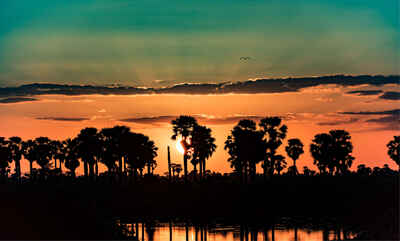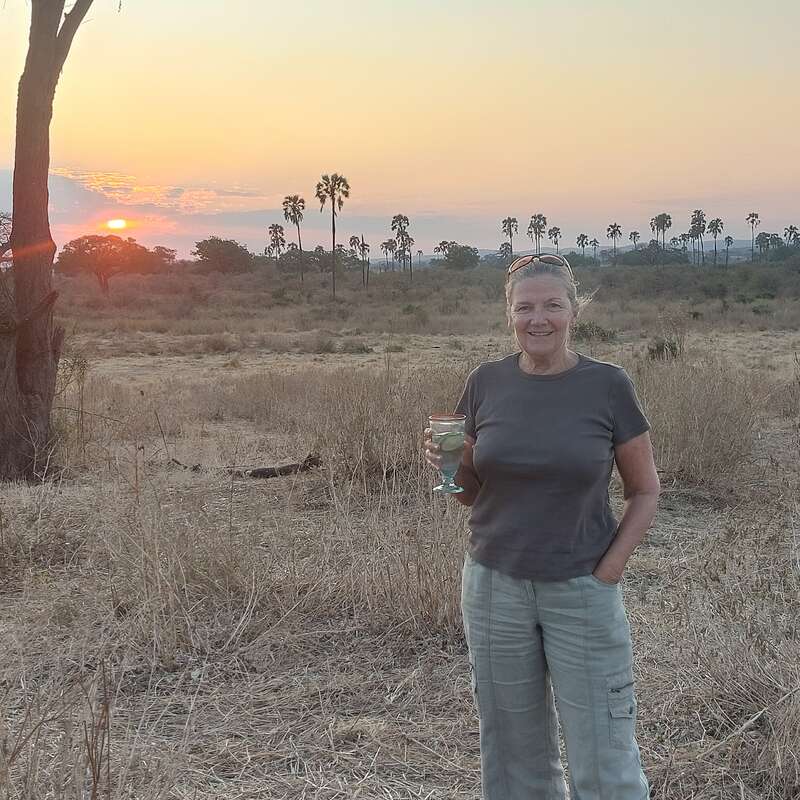About Impala Camp
Impala Camp is situated on a wooded stretch of the stunning Rufiji River within the Nyerere National Park ...
... (formerly known as the Selous Game Reserve). Simply though stylishly designed, it offers a varied safari experience.
On our last safari here Impala Camp had a really friendly atmosphere with an attentive team who tried their utmost to ensure you enjoy your stay. It’s a comfortable and down-to-earth camp that doesn’t charge top prices and has become a firm favourite in Nyerere National Park.
Our view
On our last safari here Impala Camp had a really friendly atmosphere with an attentive team who tried their utmost to ensure you enjoy your stay. It’s a comfortable and down-to-earth camp that doesn’t charge top prices and has become a firm favourite in Nyerere National Park.
Accommodation
10 rooms
Children
Best for older children 8+
Open
1st June to 31st March
Activities

4WD Safari

Birdwatching

Boat trip

Fishing

Fly-camping

Guided walking safari

Private activities
Traveller reviews of Impala Camp
281 real, un-edited reviews from Expert Africa's travellers.
Arrived 23 Oct 2024, 4 nights
"Impala Camp review"
Overall rating: Average
Arrived 1 Aug 2024, 4 nights
"Impala Camp review"
Overall rating: Excellent
Arrived 10 Jun 2024, 4 nights
"Impala Camp review"
Overall rating: Excellent
Arrived 27 Jul 2023, 4 nights
"Absolutely perfect!"
Overall rating: Excellent
Arrived 29 Dec 2022, 4 nights
"Impala Camp review"
Overall rating: Average
Arrived 11 Sep 2022, 5 nights
"Impala Camp review"
Overall rating: Excellent
Arrived 7 Dec 2019, 4 nights
"Excellent food and service - and Wild Dogs!"
Overall rating: Excellent
Arrived 2 Nov 2019, 3 nights
"Just our sort of place"
Overall rating: Excellent
Arrived 4 Aug 2019, 3 nights
"Excellent Camp and People"
Overall rating: Excellent
Arrived 12 Jun 2019, 3 nights
"Great camp, room very good, only guest twice"
Overall rating: Excellent
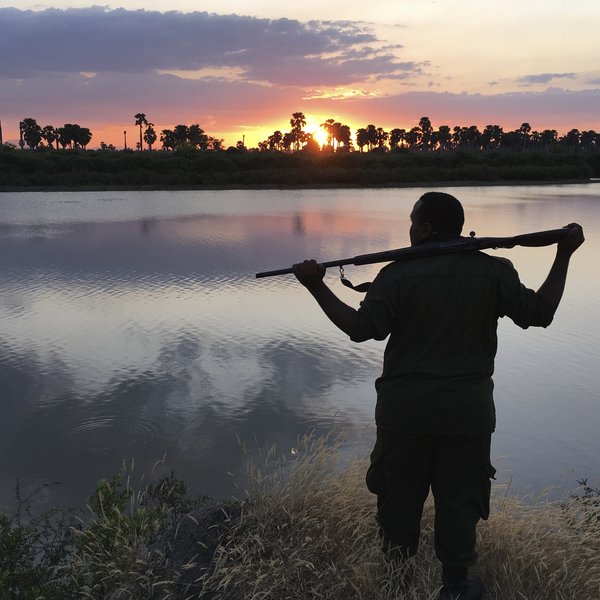
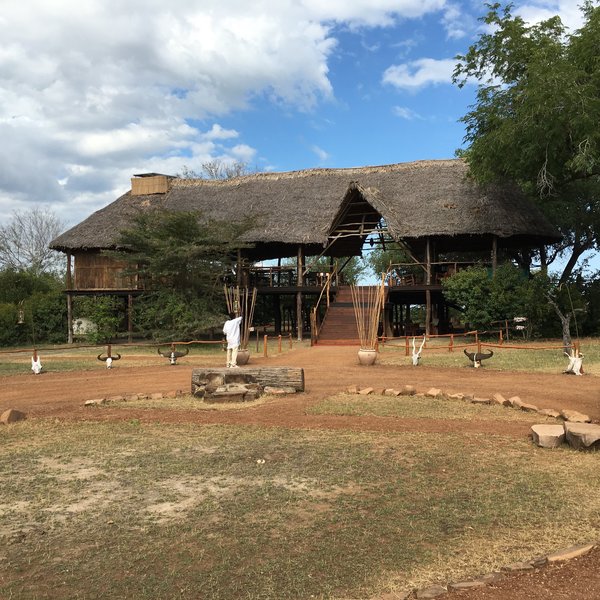
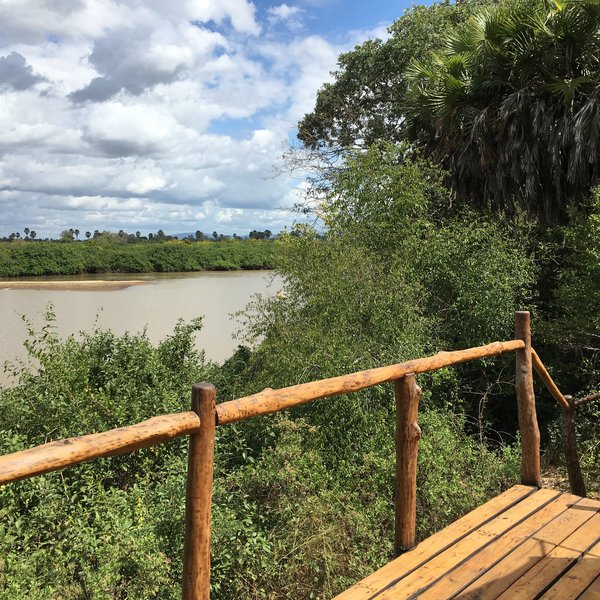
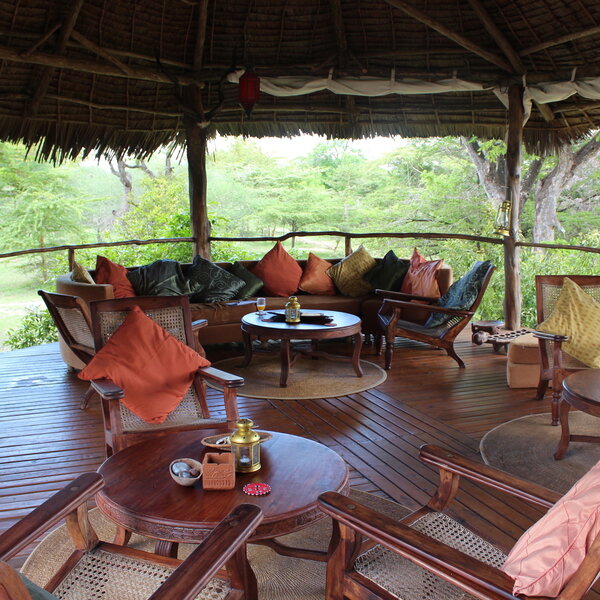
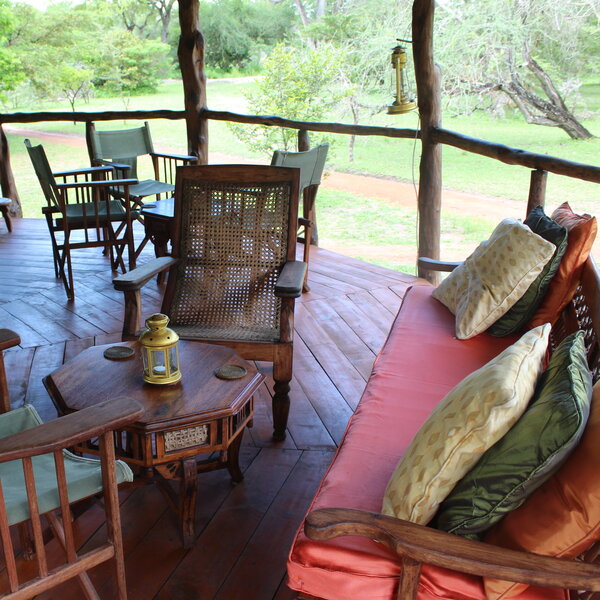
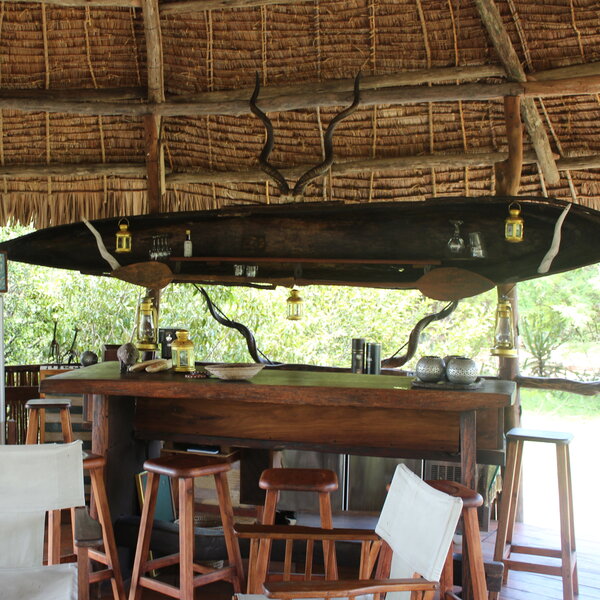
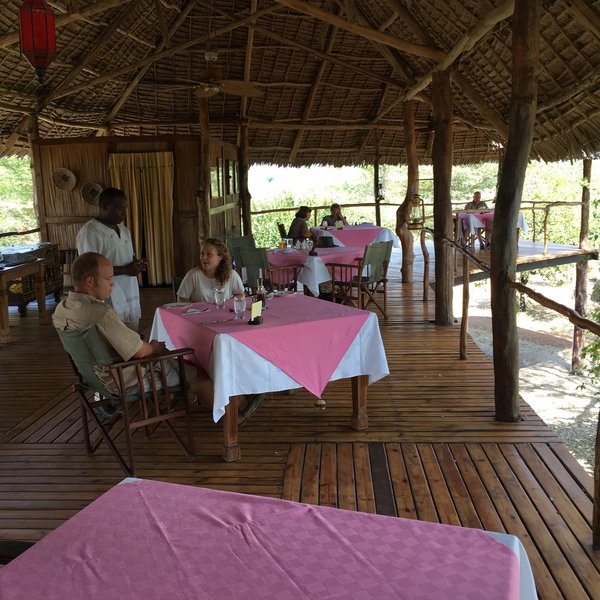
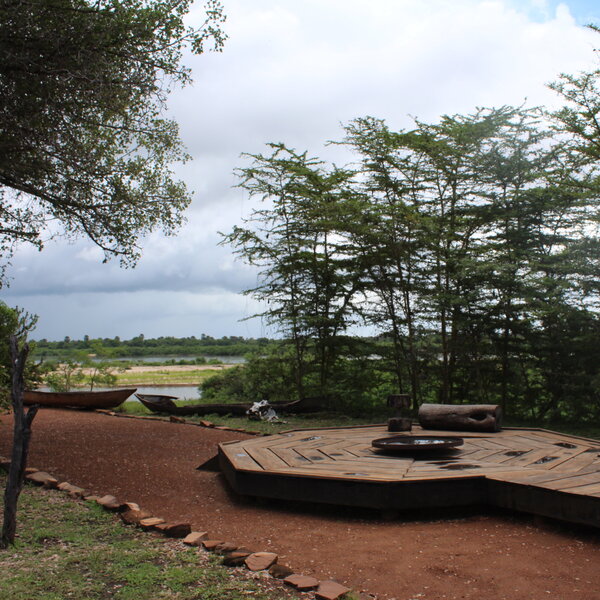
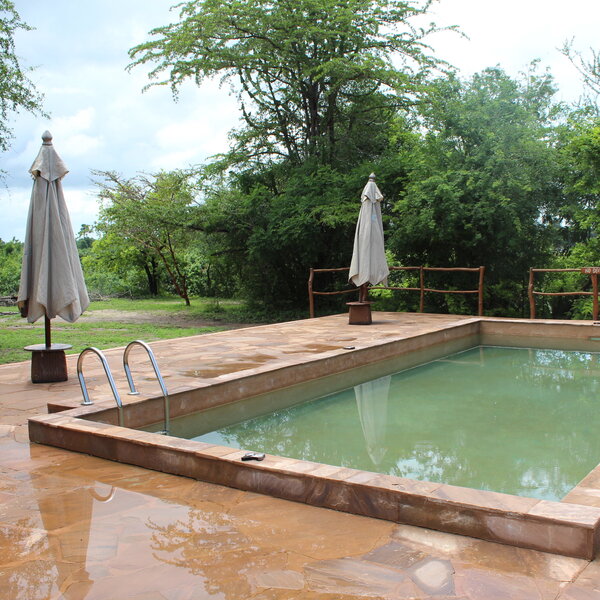
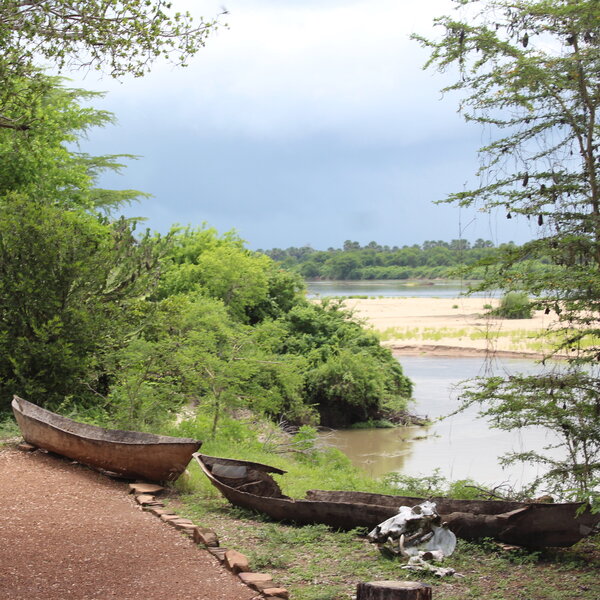
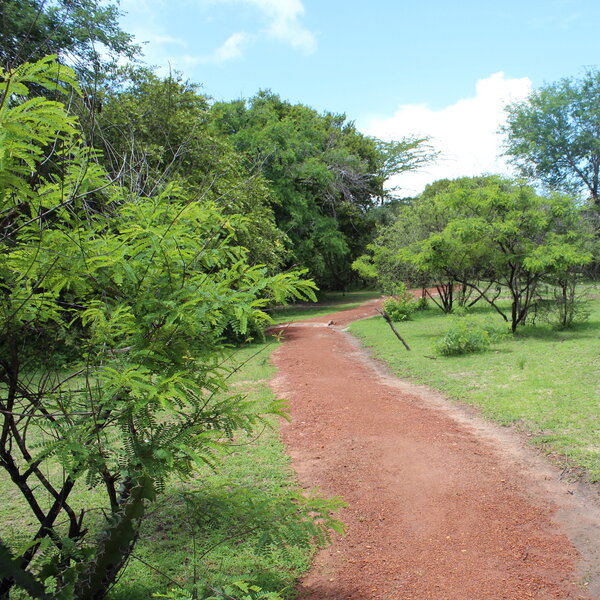
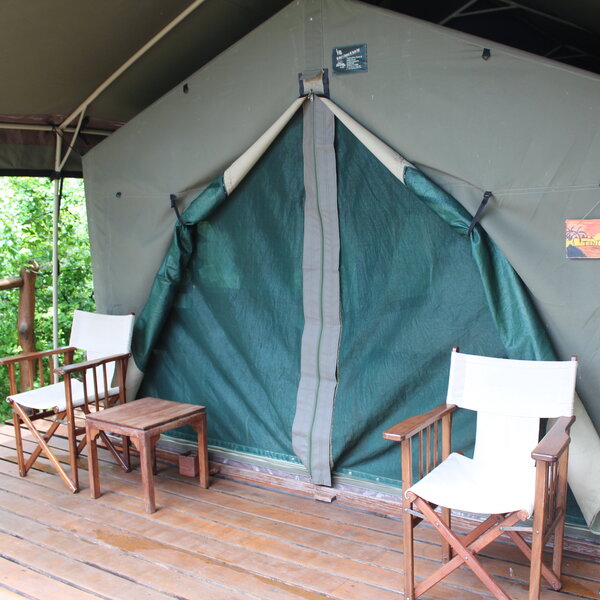
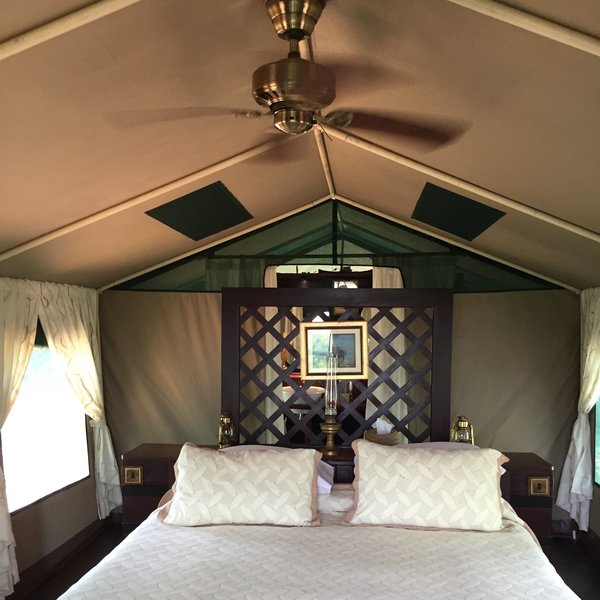
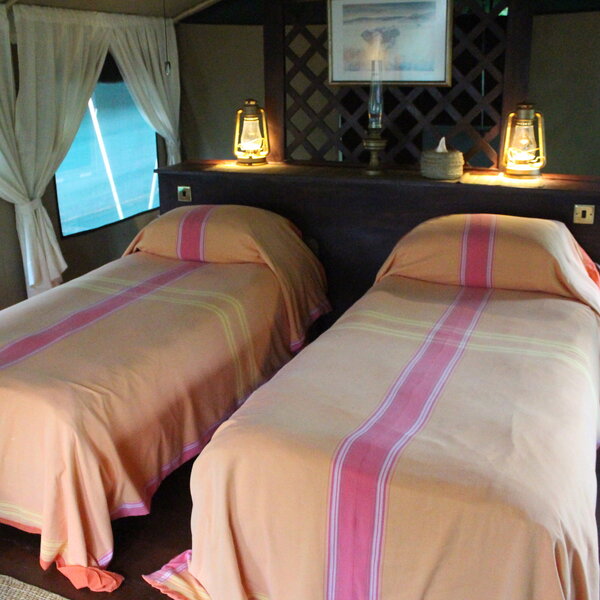
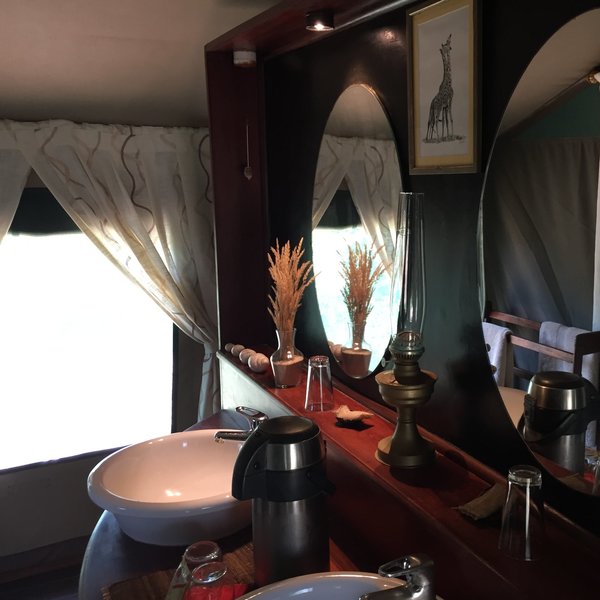
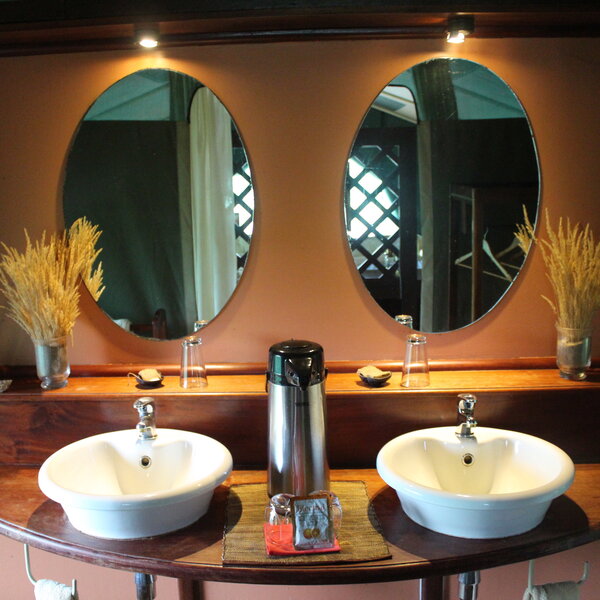
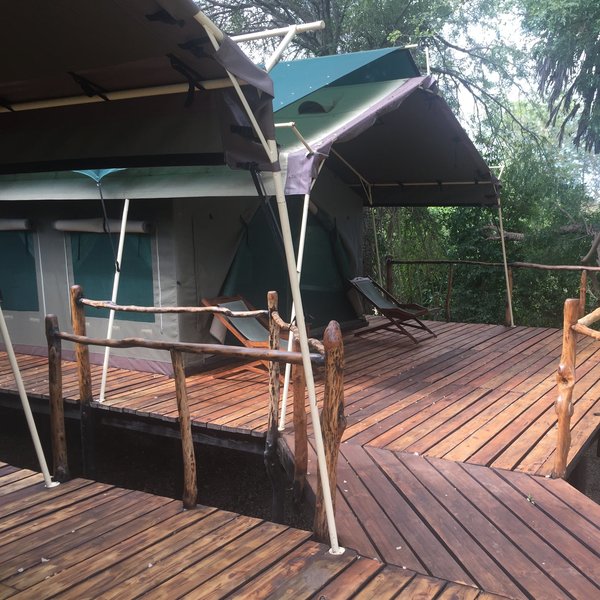
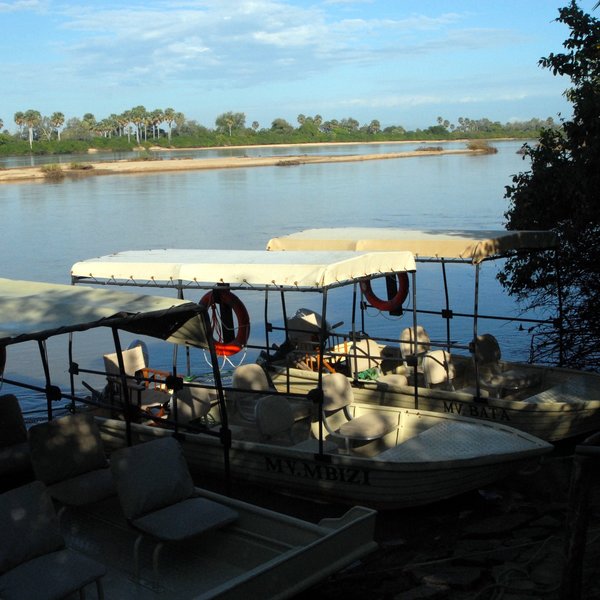
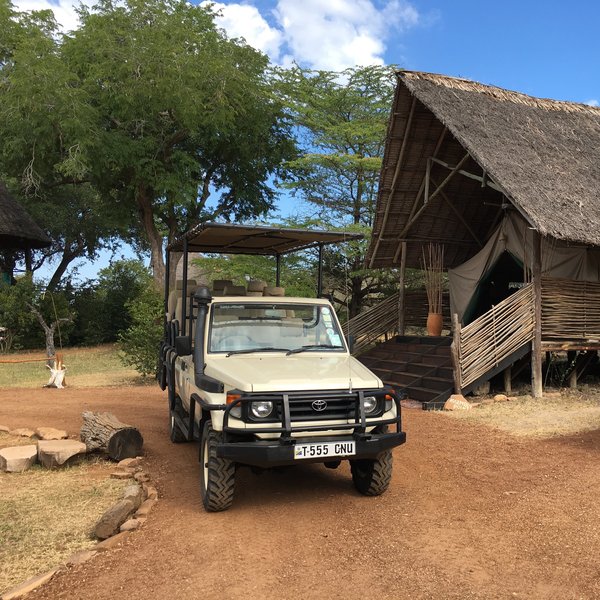
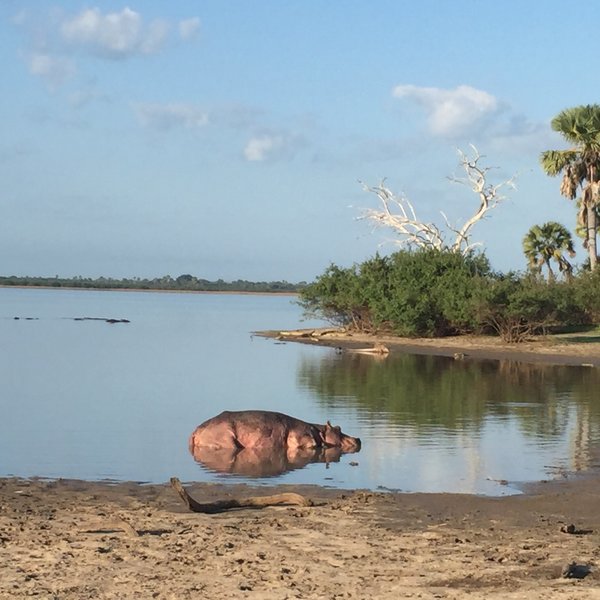
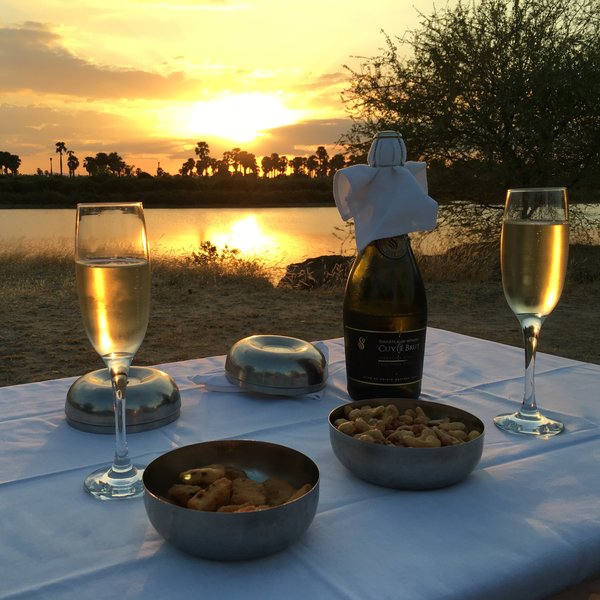
Expert Africa's gallery
When we travel we take lots of photos ourselves to give you a real and un-edited view of the safaris. See our 101 pictures of Impala Camp to get the candid view.
View galleryImpala Camp: Our full report
Impala Camp is situated on a wooded stretch of the stunning Rufiji River within the Nyerere National Park ...
... (formerly known as the Selous Game Reserve). Simply though stylishly designed, it offers a varied safari experience.
Impala Camp's breezy lounge and dining area sit on spacious wooden decking with spectacular views across the river, making it a wonderful place to watch game come down to the water to drink. A number of individual tables are set up for guests (the camp does not do group dining), and attentive staff are on hand to offer you a drink. There are plenty of lounge chairs, all made of solid carved wood with woven seats and backs of natural fibre. Touches of African art dotted around give the central area a homely feel. Here’s a place to stretch out, put your feet up, and leaf through some of Impala’s wildlife and bird books, or just enjoy the view.
Across a short walkway, in the bar area, high chairs are set against a small bar made from an old mokoro (dug-out canoe), and a few comfortable sofas with beautiful rustic-coloured cushions line the edge.
Extending further still from the bar area you can enjoy an evening drink around the campfire whilst relaxing on canvas directors’ chairs.
Walk a short way through the acacia woodland to your privately located tent on the river. Raised high up on decking, each of the eight Meru-style tents has a veranda with two comfortable chairs and a table from where you can enjoy a lovely view of the Rufiji River and land beyond. A family unit comprises two en-suite tents sharing a single platform.
Inside, Impala Camp’s tents are reasonably spacious with wooden floors, large (and very comfortable) beds with kikoi-style bedspreads and a writing desk. The rooms make use of plentiful creams and neutral colours, giving them a traditional safari feeling. Each room has a fan, electronic safe and a USB charger for phones. There are no plug sockets in the rooms, but items such as camera batteries can be given to camp management for charging. Impala’s tents all have large gauze windows that help to protect against the mosquitoes, though (even visiting when it was raining steadily) there are so few that nets are not necessary. Canvas flaps can be let down for increased privacy.
At the back of each tent, curtains separate a fairly spacious en-suite bathroom. Here you’ll find large white ceramic ‘his and hers’ sinks set into a beautiful wooden surface. Behind a partition is a proper flush toilet, and a second partition conceals a hot shower. There is also hanging space for your clothes. Soap, shampoo, shower gel and mosquito spray are useful extras.
Safari activities at Impala Camp include game drives in open-sided 4WDs and boat safaris along the Rufiji River and on the nearby lakes. We really enjoyed our time on the water with Impala Camp, spending time watching African Skimmers against the setting sun. Walking safaris are also available at additional cost, as is fishing, with the main species caught being catfish, mudfish, and the prized, predatory, tigerfish. The more adventurous might try a night or two fly-camping. In the bush you will always be accompanied by a camp guide who has a good knowledge of the game found in the area. On one stay we had a lovely Prosecco sundowner after a leisurely bird walk. And one morning included an entertainingly informative bush walk. For relaxation between safari activities, guests can enjoy a swim in the pool while looking out over the river.
Impala has very good 'back of house' infrastructure, which you are welcome to visit - allow 30 minutes for a guided tour, which includes the water treatment system and their impressive laundry and battery banks.
Activities
4WD Safari
Birdwatching
Boat trip
Fishing
Fly-camping
Guided walking safari
Private activities
Families & children
- Attitude towards children
- Impala Camp welcomes families with children aged 6 or older.
- Property’s age restrictions
- Only children over the age of 16 years may go on a walking safari or fly-camping.
- Special activities & services
- Impala Camp are flexible about the length of their safari activities – they will happily do shorter drives and boat journeys for families with children.
- Equipment
- There are special children’s lifejackets available for boat-trips.
- Generally recommended for children
- Yes – there is a family room here that consists of two tents together.
- Notes
- Parents should be aware that Impala Camp is not fenced and dangerous wildlife can, and does, pass through at any time – so children should not be left unaccompanied.
Food & drink
- Usual board basis
- Full Board & Activities
- Food quality
- The food at Impala Camp was beautifully presented when we last stayed, with lunch and breakfast being served on large wooden platters and in little coconut-shell dishes. Everything was very fresh and tasty, and the meals offered a real mix of international cuisine.
Breakfast at Impala Camp is usually fruit, a variety of cereals, bread and homemade jam. The chef will cook hot breakfast items to order in front of you on the large gas BBQ.
Lunch is a two-course meal with a main course and side-salad, followed by fruit for dessert. On our last visit we had Nile Perch with potato rostis and a colourful salad, followed by a tasty date and cashew pie.
For dinner you can expect a four-course meal, with a few main-course options. We found it tough to choose between the beef steak in a curried sauce and the calamari risotto! - Dining style
- Individual Tables
- Dining locations
- Indoor and Outdoor Dining
- Drinks included
- At Impala Camp filtered water, tea and coffee are included, but other drinks are extra (eg US$3 for a glass of wine, US$2.50 for soft drinks, US$3.50 for a beer).
Our travellers’ wildlife sightings from Impala Camp
Since mid-2018, many of our travellers who stayed at Impala Camp have kindly recorded their wildlife sightings and shared them with us. The results are below. Click an animal to see more, and here to see more on our methodology.

100% success

100% success

95% success

95% success

95% success

94% success

94% success

89% success

65% success

53% success

11% success

11% success

0% success

0% success

0% success
Getting there
- Location
- Nyerere National Park, Tanzania
- Ideal length of stay
- 3 nights to make the most of all the activities.
- Directions
- From Dar es Salaam, it’s a 45-minute flight into Nyerere National Park, where you will land at an airstrip 14km from Impala Camp. It’s then a short safari drive or boat ride back to camp. Alternatively, it is around a six-hour drive from Dar es Salaam – depending on the weather and therefore the state of the roads.
- Accessible by
- Fly-and-Transfer
Special interests
- Family safaris
- At night when you mustn’t walk unaccompanied on the ground, Impala’s family tents allow passing between two tents as they’re set on one platform. Come with up to three children (all ages) for boat trips and flexible durations of drives on your Tanzania family safari.
- See ideas for Family safaris in Tanzania
- Honeymoons
- Impala Camp has a beautiful and romantic setting, on the edge of the Rufiji River. The rooms are very private, each with its own veranda and wonderful views. The team have told us the efforts they go to for spoil honeymoon couples – an ideal treat for a Tanzania honeymoon.
- See ideas for Honeymoons in Tanzania
- Birdwatching safaris
- While birdwatching in Nyerere National Park on our last visit to Impala Camp we spotted malachite kingfishers and regal African fish eagles. We were also fortunate enough to see dozens of carmine bee-eaters building their nests in the river’s banks.
- See ideas for Birdwatching safaris in Tanzania
- Wildlife safaris
- Nyerere National Park is an excellent game reserve with great populations of big game from elephants and buffalo to lion, leopard and a good population of wild dogs.
- See ideas for Wildlife safaris in Tanzania
Communications
- Power supply notes
- The lights and fans in the tents work 24 hours a day. There is a back up generator but this is rarely needed.
- Communications
- Impala Camp has a satellite phone and basic email in the office, but these are for camp use and emergencies only. Although there is now intermittent cellphone reception in Nyerere, the camp requests that guests refrain from using phone in the public areas. There is no WiFi.
- TV & radio
- There is no TV.
- Water supply
- Other
- Water supply notes
- Water is pumped from the river and filtered, with jugs of drinking water provided in the rooms. Bottled water is available on request.
Health & safety
- Malarial protection recommended
- Yes
- Medical care
- There are first-aid kits at Impala Camp in the office and on all of the vehicles for minor injuries and illnesses and some members of the team are trained in basic first aid. For emergencies, Impala has links to the flying doctors’ service in Dar es Salaam, which is a 45-minute flight away.
- Dangerous animals
- High Risk
- Security measures
- The camp is not fenced and wildlife does occasionally pass through, so traditionally dressed friendly Maasai, armed with spears, will always escort you to and from your room; there’s also an armed park ranger at the camp. Every room has a safe for valuables.
- Fire safety
- Impala Camp has a pump to pump water from the river in case of a fire and there are extinguishers in all rooms.
Useful info
- Disabled access
- Not Possible
- Laundry facilities
- Included. Usually returned within 24 hours weather permitting.
- Money
- No money exchange is offered. Electric safes in all tents for storing valuables.
- Accepted payment on location
- Credit card facilities are not available. Payment for any extras should be made in cash. US dollars, Tanzanian shillings, English pounds or Euros are accepted.
Plan and book your trip with Expert Africa
All of our trips are tailor-made, so we'll always adapt them to suit you. Talk to an Expert and let us plan and arrange your perfect trip.

Talk to an Expert
Call or email us now! We’ll match you with the Specialist in our team who is best suited to help you. Then together we can start planning your trip.

Set up your itinerary
Based on our experience and your ideas, your specialist will create a detailed, costed itinerary. We’ll refine it together, until we have a trip that you’re perfectly happy with.

Prepare for your trip
The same Specialist will make the seamless arrangements for your trip, send you detailed travel documents, and be available to answer any questions before you depart.

Travel with peace of mind
After you set off, you’ll be cared for by our partners in Africa, most of whom have worked with Expert Africa for decades. And if you ever need us urgently, we’re available 24/7.

When you return
We love to learn about your trip, and so will always be grateful if you’ve the time to give feedback to your Specialist when you return.
Impala Camp's location
Look closer at the environment and surroundings of Impala Camp.
Other lodges in Nyerere National Park
Alternative places to stay in this same area.
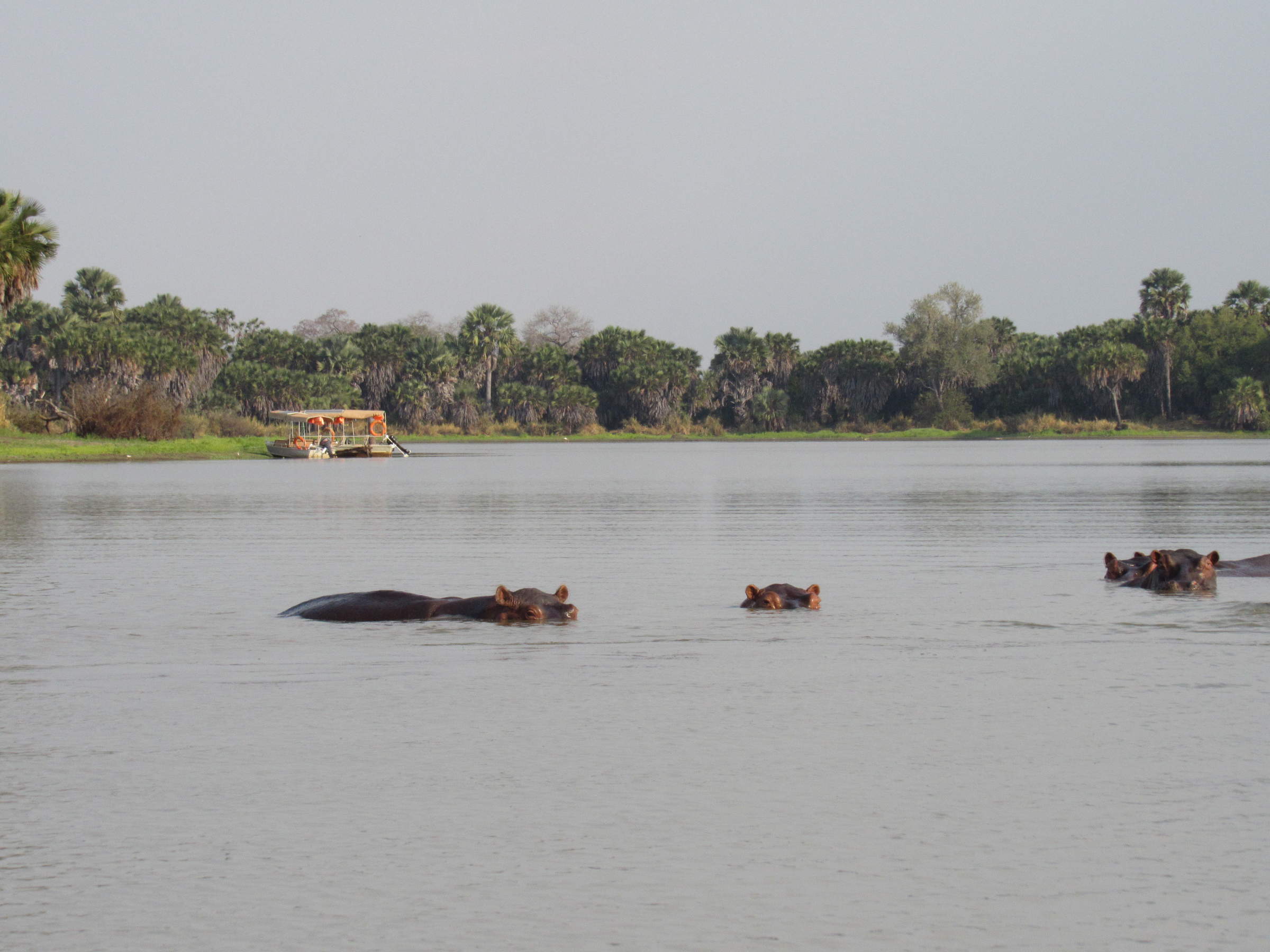
Lake Manze Camp
Lake Manze Camp is a rustic, lakeside bushcamp in Nyerere National Park that offers a great wilderness experience and doesn’t cost the earth.
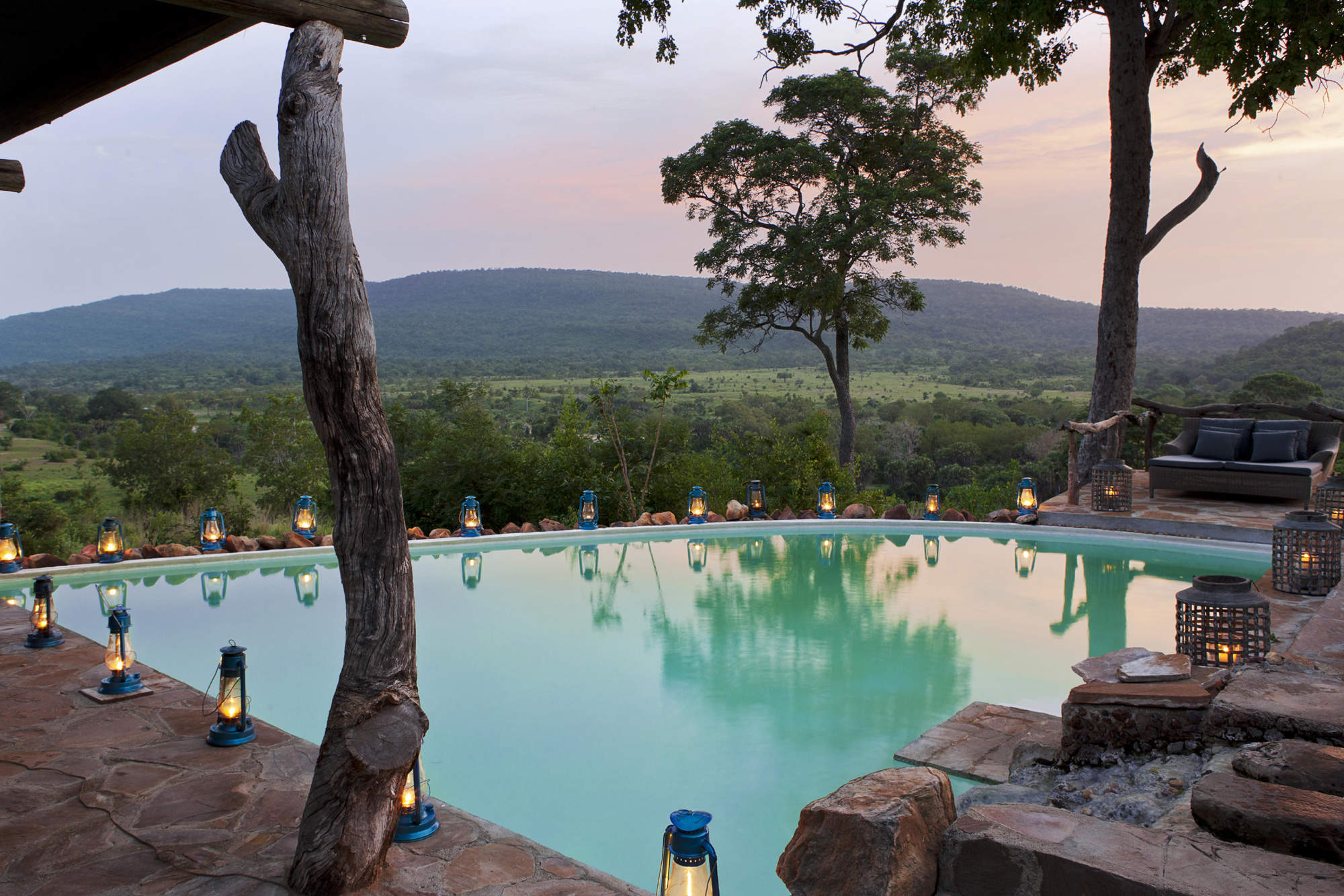
Beho Beho
Beho Beho is one of the best camps we work with in Africa, with gracious hosts, fantastic food and most importantly, excellent guiding.
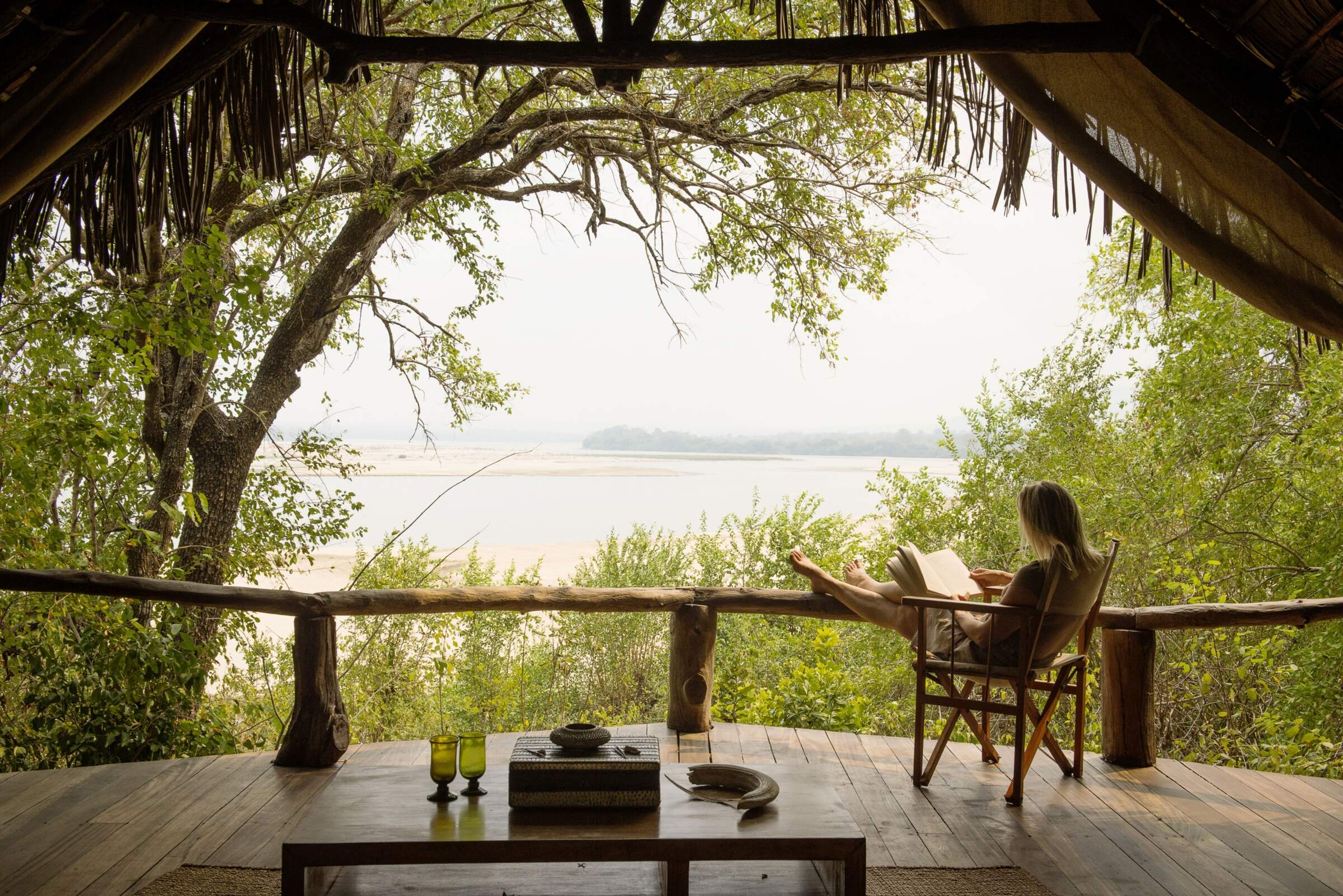
Sand Rivers Camp
The stylishly put together Sand Rivers has an outstanding reputation, with a wonderful location on the Rufiji River and great guides.
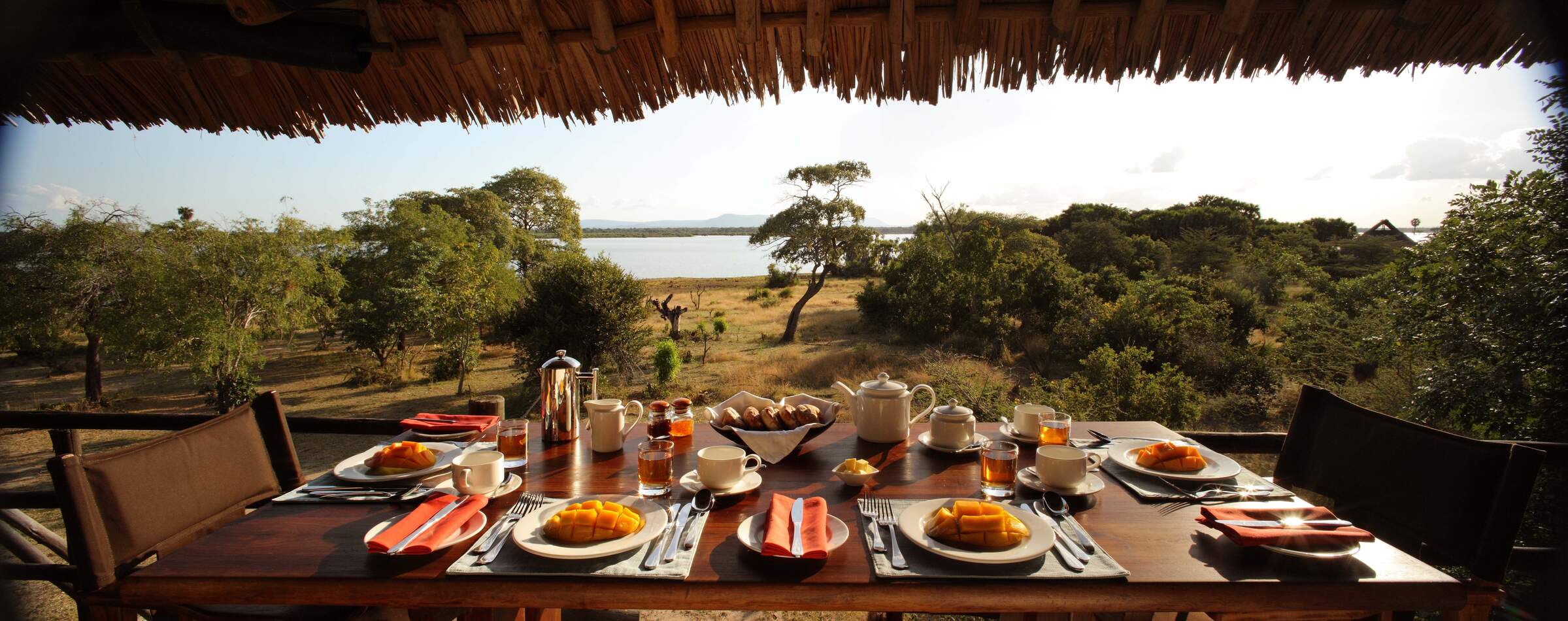
Siwandu
Siwandu is a luxurious and smoothly run camp with beautiful rooms and superb service offering great views over Lake Nzerakera.
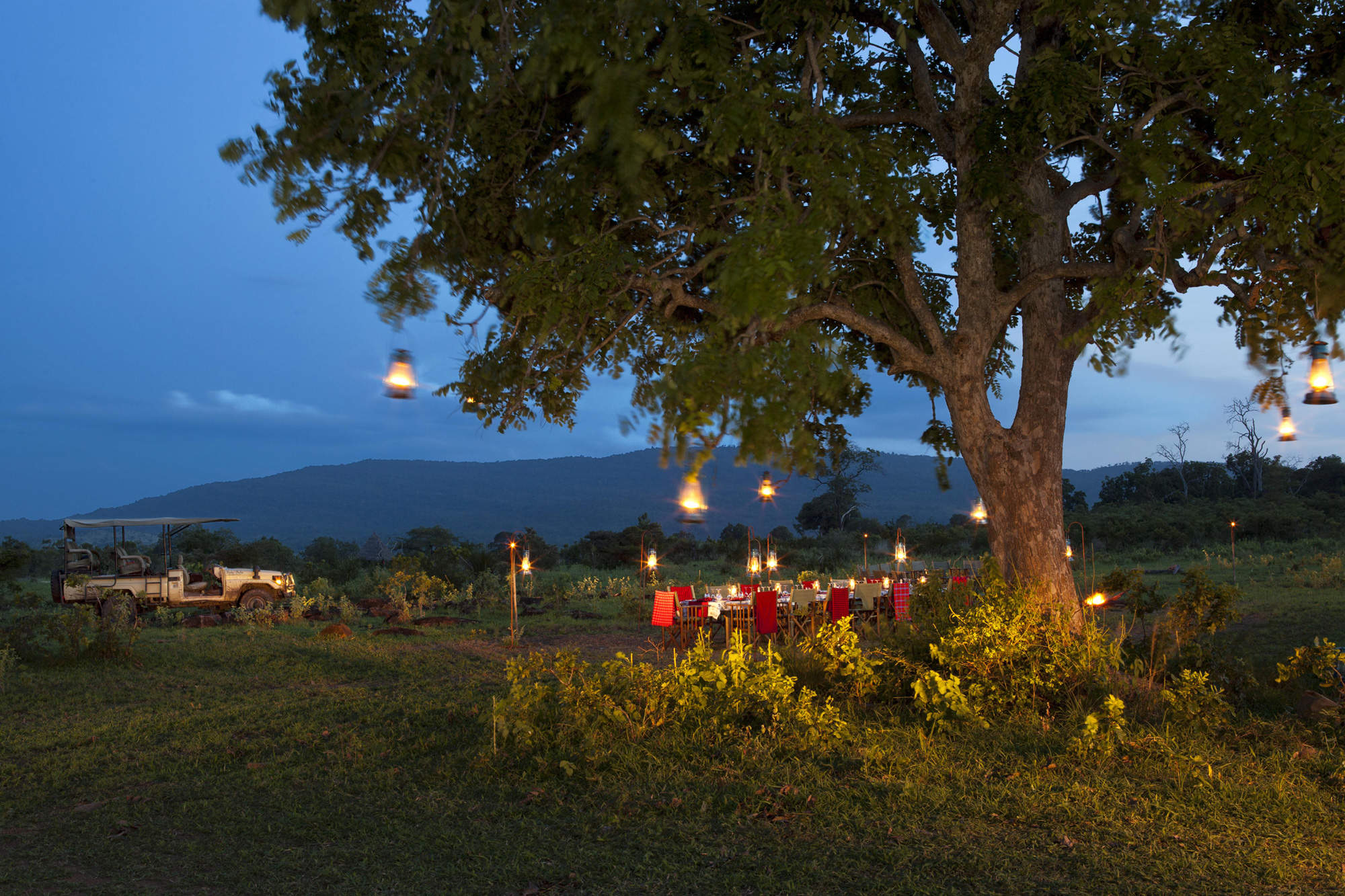
Beho Beho Tree-house
Beho Beho Treehouse is a satellite tree platform for just one couple, managed by Beho Beho and ideal as a one-night honeymoon retreat
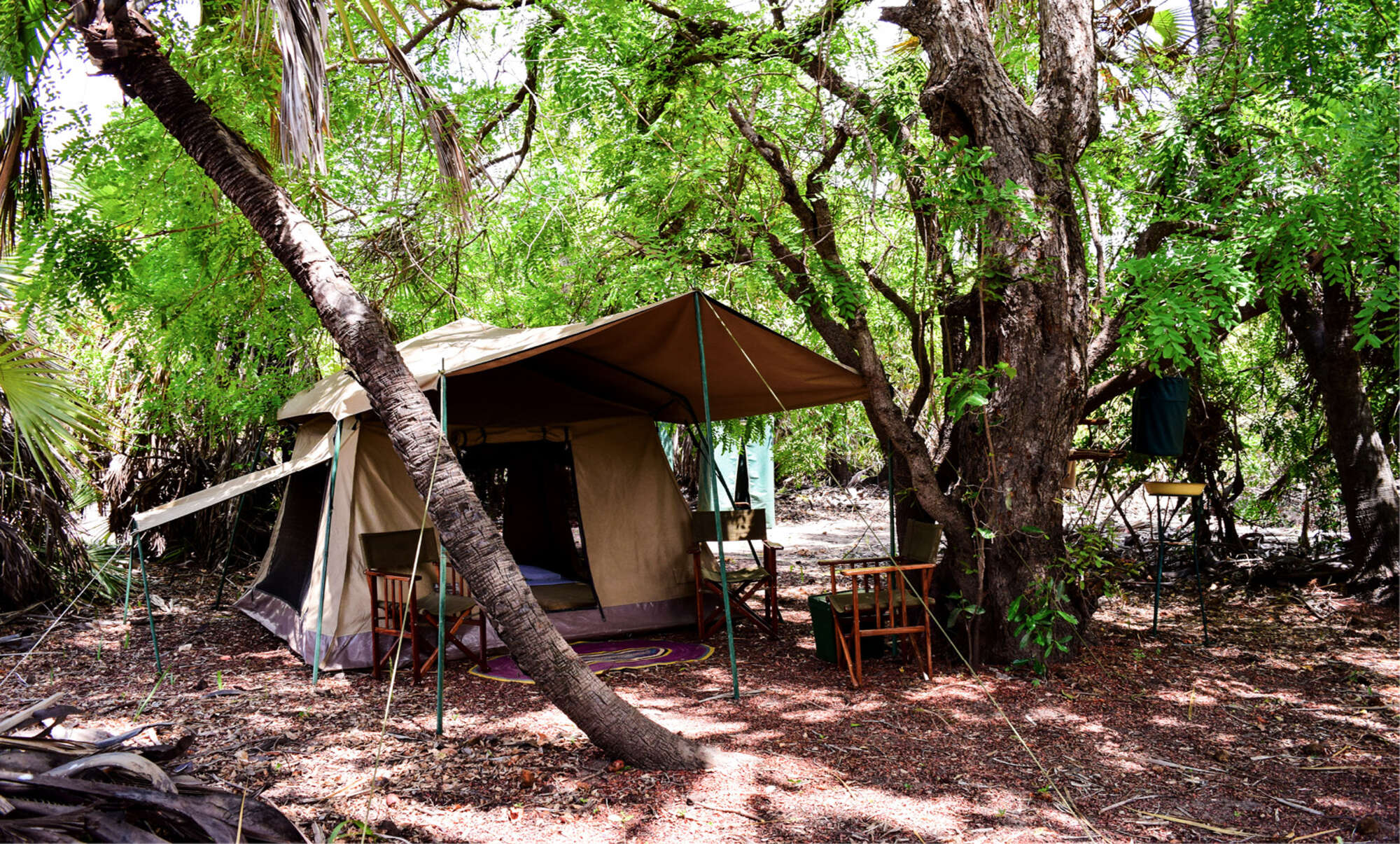
Impala fly-camping
While you're staying at Impala Camp in Nyerere National Park, you can enjoy a few nights' fly-camping in the heart of the bush.
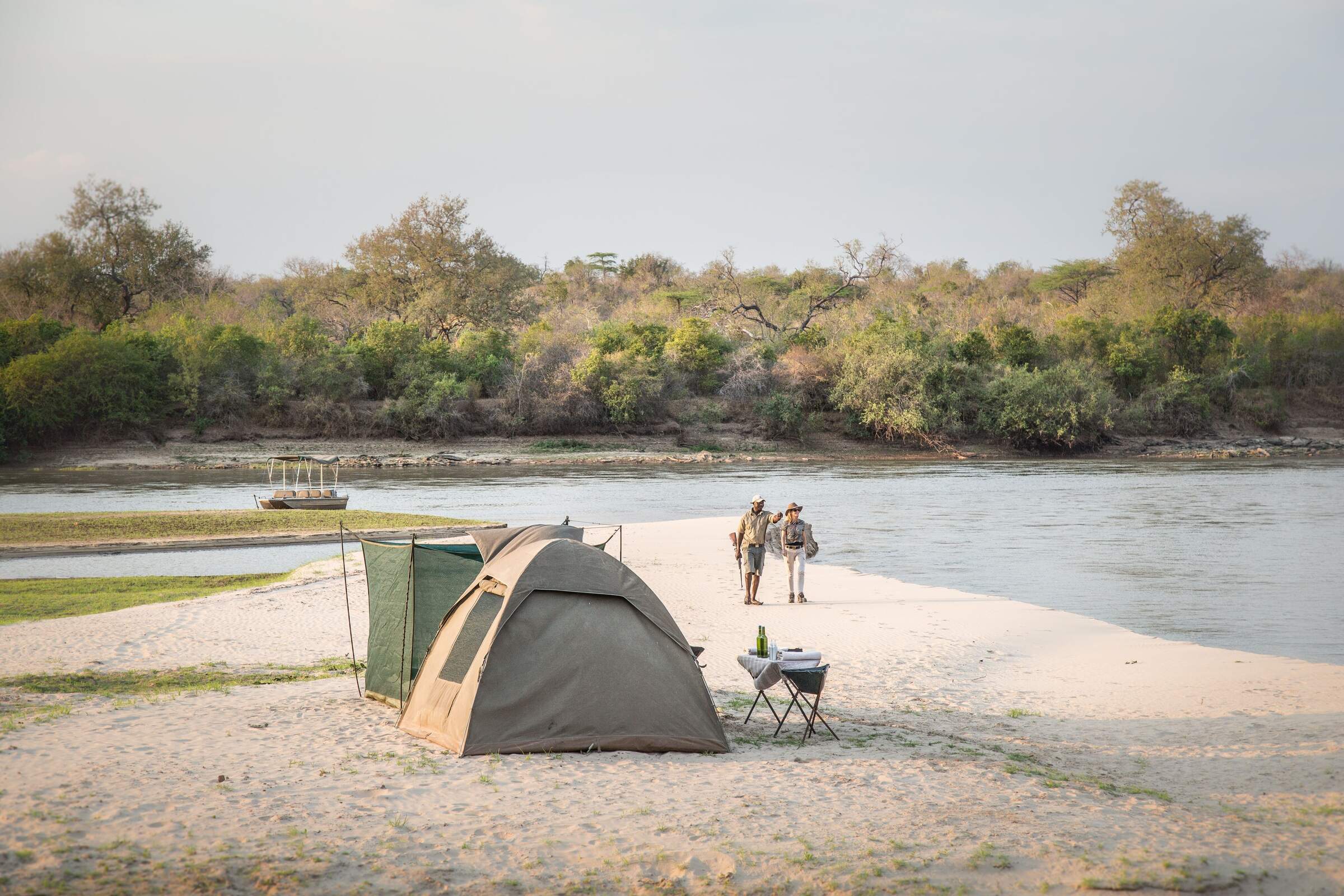
Sand Rivers fly-camp
Sand Rivers fly-camping safaris in Tanzania's Nyerere National Park operate out of Sand Rivers Camp, on the Rufiji River.
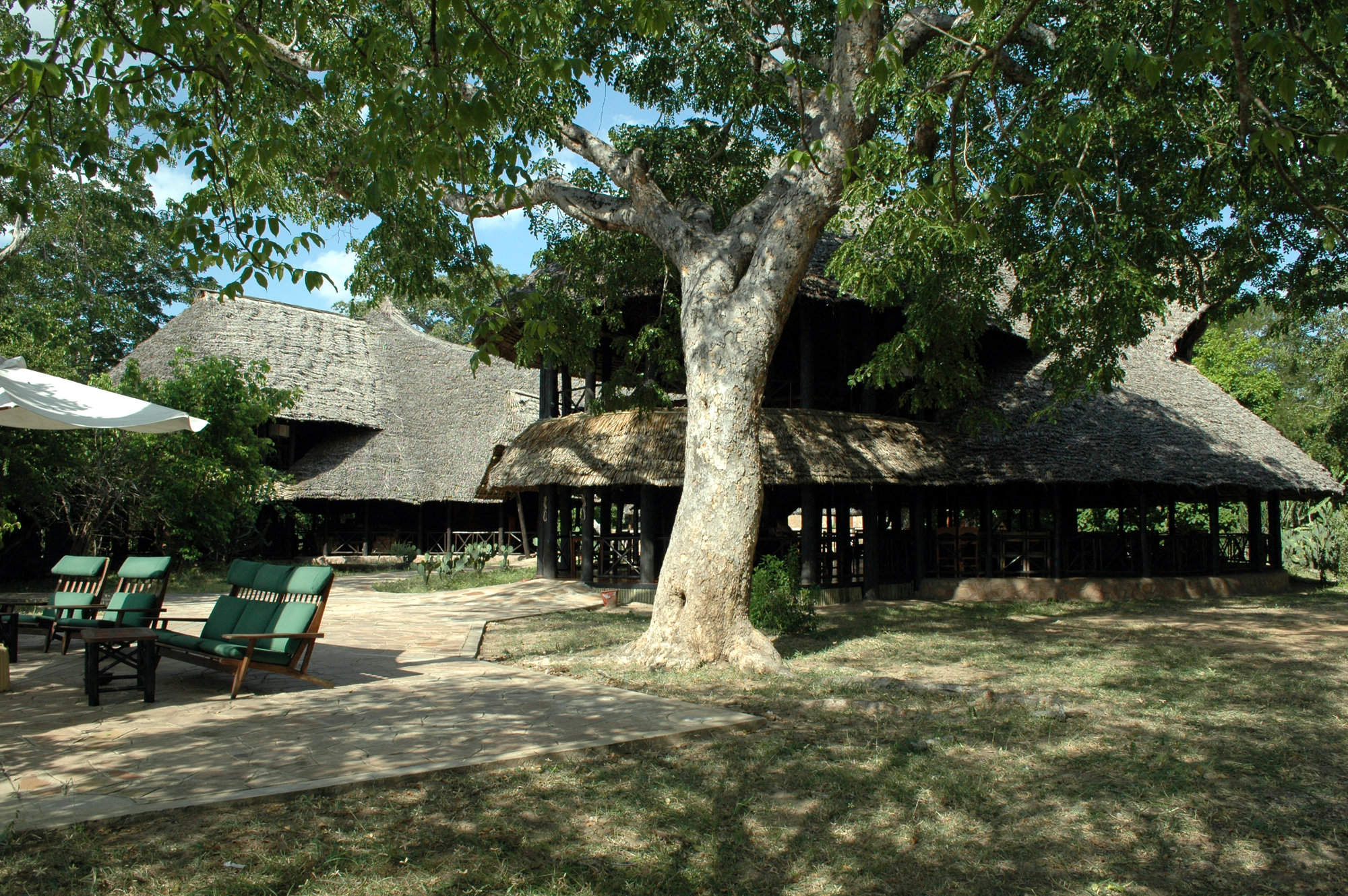
Rufiji River Camp
Rufiji River Camp has a lovely location right on the edge of the Rufiji River and while not luxurious, it is one of the lowest-cost camps in the park.
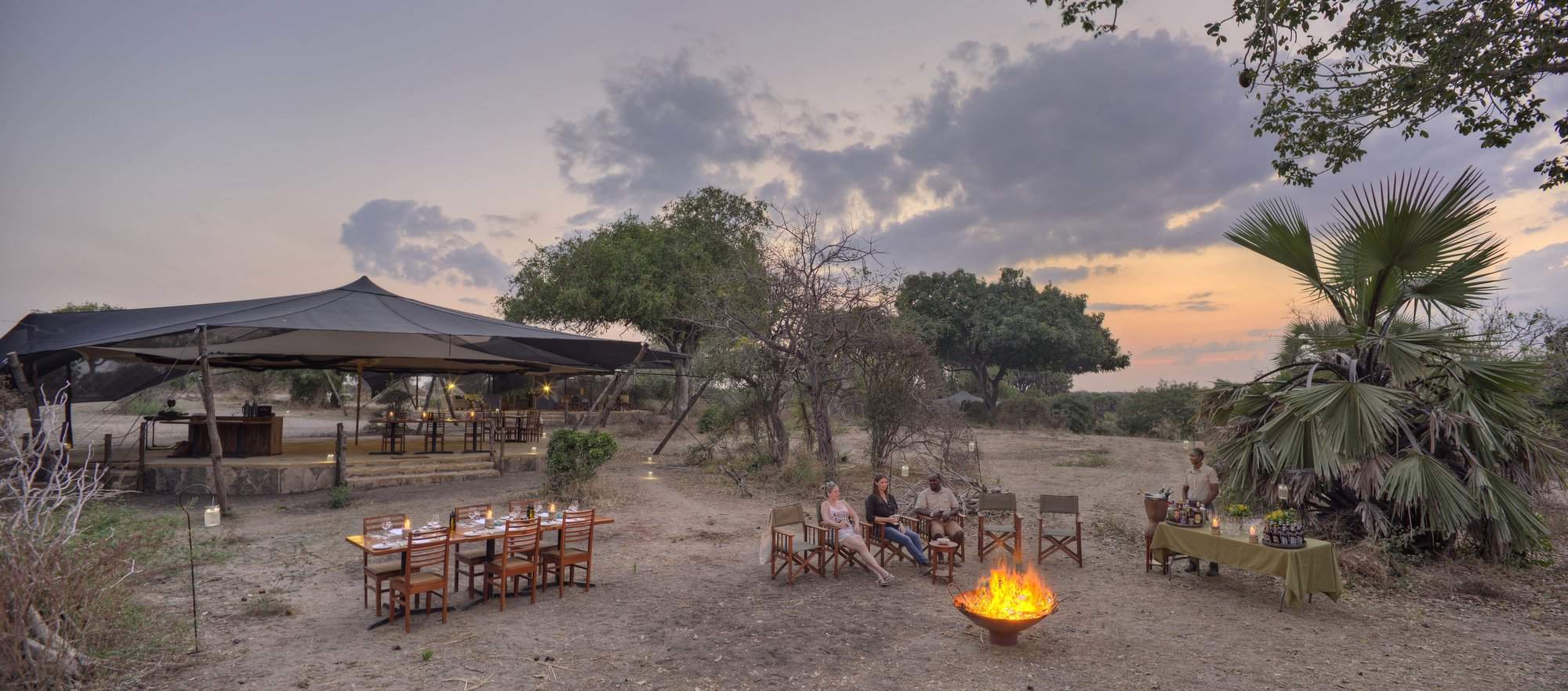
Roho ya Selous
Roho ya Selous is a smart tented camp on the west side of lake Nzerakera, close to the park’s best wildlife-viewing areas.
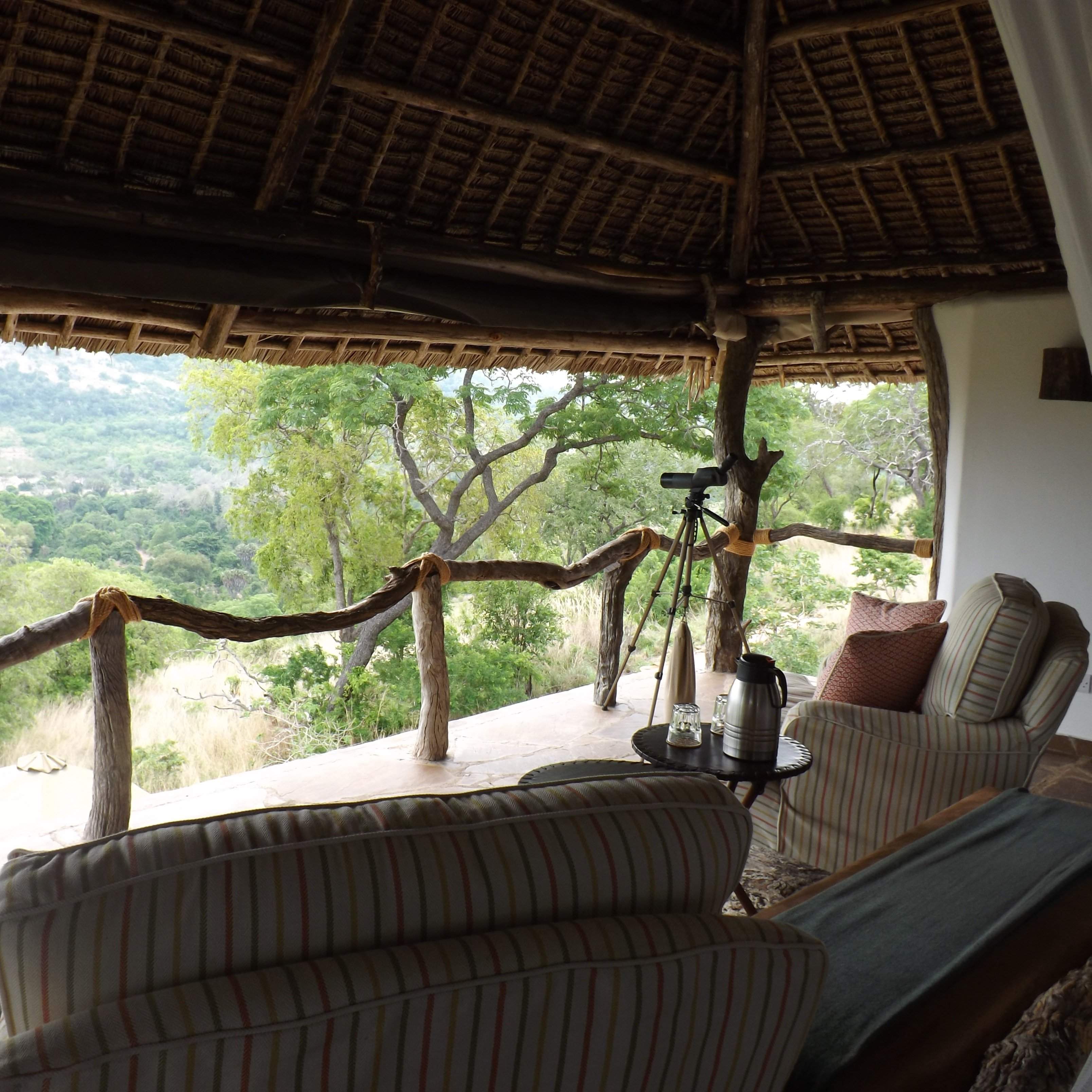
Beho Beho Bailey's Banda
Bailey's Banda at Beho Beho is a luxurious safari lodge in Nyerere National Park which can be booked exclusively for you and your party.
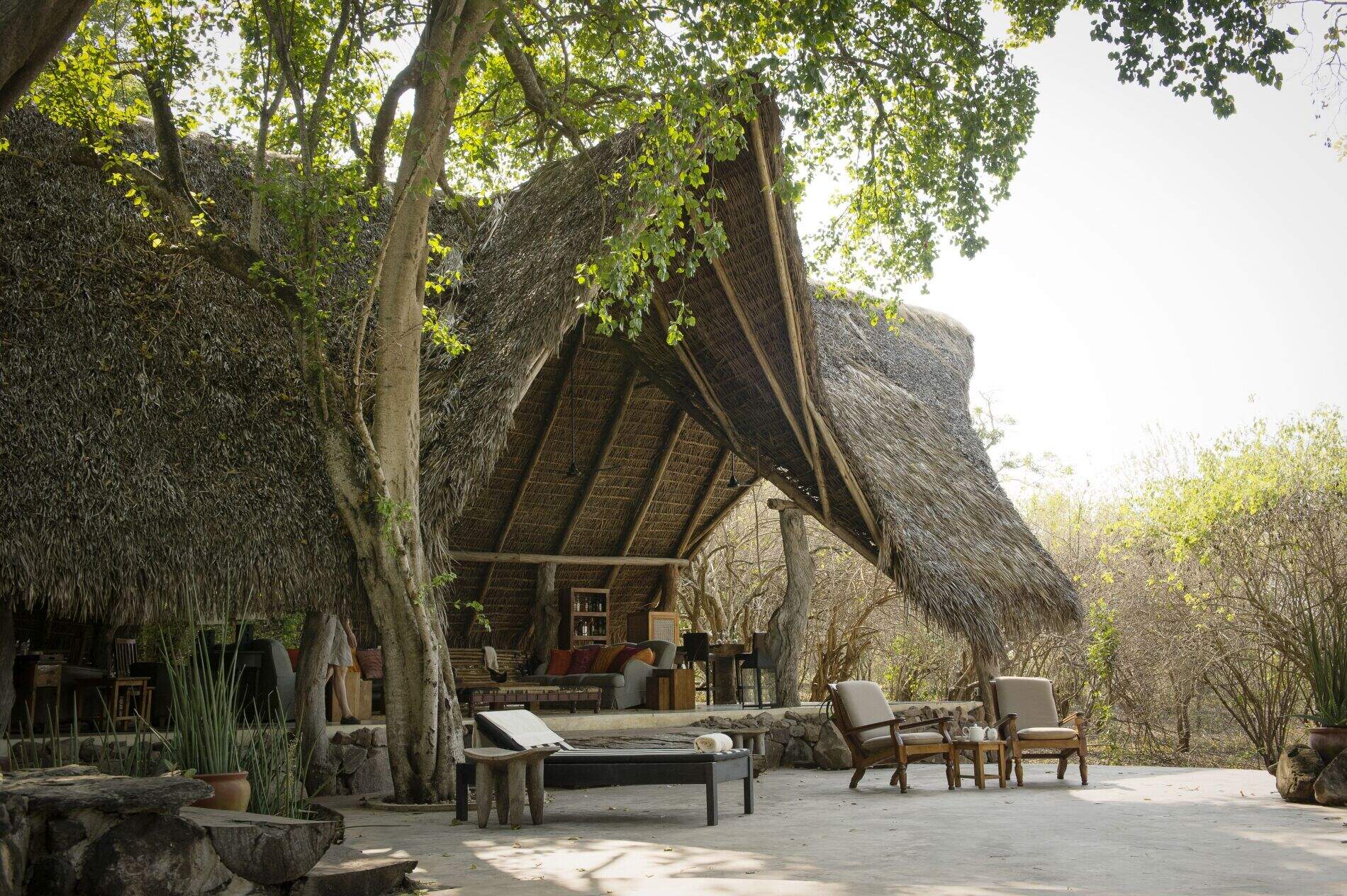
Kiba Point
Kiba Point is the private sister camp of Sand Rivers, available on an exclusive basis, with its own private drivers and staff.
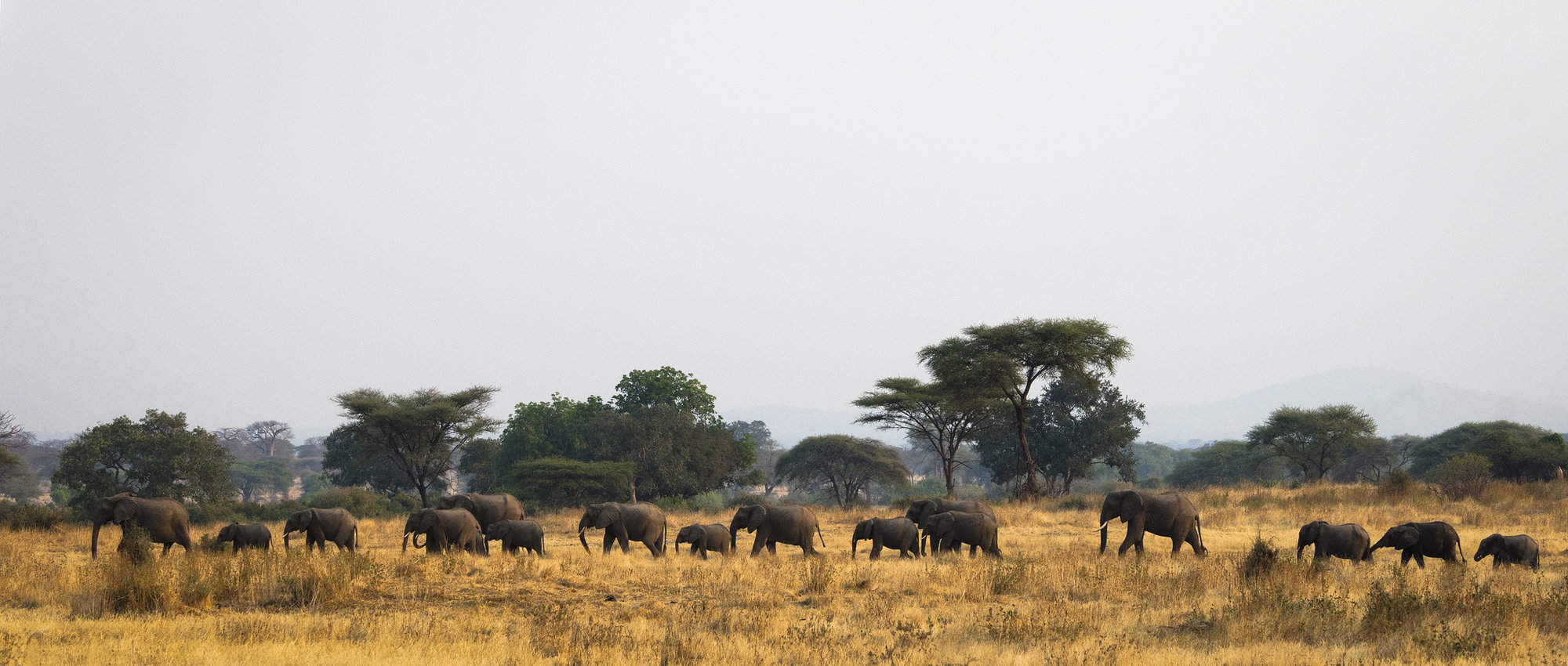
Rufiji River fly-camp
Fly-camping trips can be organised from Rufiji River Camp in Tanzania's Nyerere National Park
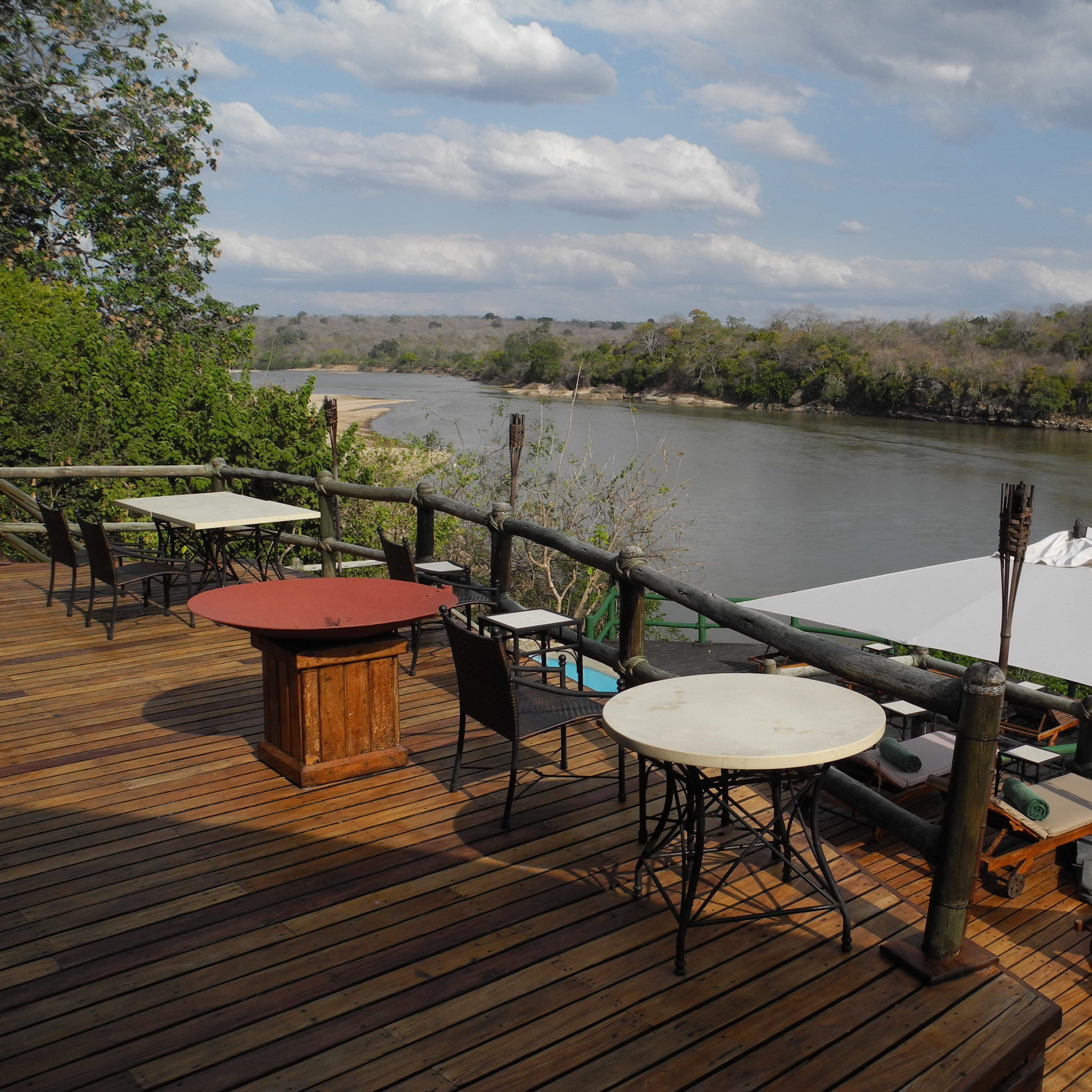
Mivumo River Lodge
Mivumo River Lodge is Serena's main lodge in the Selous. Although comfortable, the windows and air-conditioning dispel any wilderness feel.
When to go to Nyerere National Park
Our month by month guide: What it's like to visit Impala Camp in Nyerere National Park
Jan
Feb
Mar
Apr
May
Jun
Jul
Aug
Sep
Oct
Nov
Dec
Tanzania in January
January usually marks the start of the short dry season, although the exact timings of this are a little unpredictable. You can expect clear blue skies and sunshine, if the short rains have stopped, and the temperatures will be building. The short dry season is a little less pronounced in Southern Tanzania, and so it can still be wet in these areas. It is an interesting time for avians as resident birds go into breeding plumage and migrant species can be present.
Once the New Year busy period has quietened down, January can offer great value and quieter parks, although the weather can be variable, and in the Selous and Ruaha the wildlife is more dispersed.
- Variable weather: clear & dry or cloudy with some rain.
- Occasional thunderstorms may occur.
- A good time of year for birding as and many migrant species are around
- The wildebeest migration is gathering in the southern Serengeti.
- Busy in early January, quietening down through the month.
Our view
A good time to visit, with pros & cons
Weather in January
Tanzania in February
February is during the short dry season and is one of the hottest months in Tanzania, with temperatures reaching around 33°Celsius. This can be a good time to visit, as some areas of the Northern Circuit are comparatively quieter than during the European summer months, and lodge rates are also a little lower.
The wildebeest will typically be on the southern plains of the Serengeti for their calving season, which tends to occur in a 2-3 week window in early-mid February – although this does vary year on year. This is also a particularly rewarding time for birdlife, as northern hemisphere migrants join the resident species.
- Hot and dry weather.
- Wildebeest migration calving on Serengeti’s southern plains.
- Ngorongoro Crater and southern Serengeti busy for the migration.
- Selous and Ruaha are typically quiet at this time.
- The parks are likely to be lush and green, leading to pretty landscape
Our view
A very good time to visit
Weather in February
Tanzania in March
The heavier ‘long rains’ start in earnest in March although exactly when varies year on year. With no need to stay close to permanent water sources, migratory wildlife disperses, and so game viewing starts to become more challenging. This is most prominently seen in Tarangire National Park. The wildebeest migration may still be calving, or have moved on into the central regions of the Serengeti.
Many of the camps in the southern parks close mid March and mobile tented camps in the Serengeti will wind down towards the end of the month in order to move location or carry out refurbishments, ready for the new tourist season.
- Hot with building humidity, before the rains begin at some point.
- Wildlife viewing is variable depending on the start of the rains.
- Parks are quiet and rates are low.
- Not great for southern or western Tanzania.
- March can be a good time for birding, with many migrant species.
Our view
A good time to visit, with pros & cons
Weather in March
Tanzania in April
April is in the middle of the long rainy season and is the wettest month, with on average 250mm of rain. Temperatures are fairly high and humid in comparison to the rest of the year. Expect the bush to be lush and flowering, and alive with insects, birds and smaller animals. It is however also dense, allowing wildlife to hide, which in turn makes game viewing harder. This is a very quiet time in terms of visitor numbers.
Many of the tented camps are closed in April, however the larger lodges remain open. The rates are significantly cheaper, and so if you are willing to work harder to spot the bigger game, some accommodation bargains can be had.
- Heavy rain expected, with impressive thunderstorms and lightning.
- Many camps closed and roads impassable due to ground conditions.
- Rates are at their lowest all year round, with very few other tourists
- Places that are open are green and vibrant, wildlife more dispersed.
Our view
This is not a great time to visit
Weather in April
Tanzania in May
As Tanzania is close to the equator there is no dramatic difference in climate throughout the year, but temperatures do start to drop a little in May. The rains are likely to still be present, although potentially clearing towards the end of the month. Visitor numbers and lodge rates are still low. The wildebeest migration is making its way through the western regions of the Serengeti, crossing the Grumeti River.
Virtually all camps in southern Tanzania remain closed, and many of the roads and tracks in the Selous become impassable.
- Heavy rains and storms are likely, this can create some dramatic skies
- Blissfully quiet in northern Tanzania, and a good time to avoid crowds
- The parks are likely to look lush and green, with long grass.
- Wildlife is likely to be more dispersed, with fewer sightings.
- The low prices make safaris much more affordable at this time.
Our view
This is not a great time to visit
Weather in May
Tanzania in June
The rains come to an end at some point during the month and migratory wildlife begins to be drawn back to perennial water sources as the land starts to dry up. It’s likely that the parks will still be quite green and the grass high though, so walking and fly-camping may be unlikely. This marks the start of the season with camps reopening, but prices are still more affordable than the subsequent months.
The migration may still be in the Western Corridor, or on the move northwards towards the Mara River. Western Tanzania presents more challenging conditions for chimpanzee trekking in Mahale National Park, as the chimps are higher in the mountains.
- Variable weather: clear & dry or cloudy with some rain.
- A transitory time for the migration – moving from west to north.
- The parks may still be quite green, and grasses high.
- Wildlife may be dispersed still.
- Relatively low visitor numbers and good value, shoulder season prices.
Our view
A good time to visit, with pros & cons
Weather in June
Tanzania in July
July is considered to be the start of the peak season, with no rainfall expected and pleasant daytime temperatures. As the parks dry, the wildlife congregates in fewer areas, grass is eaten and trampled by the migration, and game viewing gets better and better. The wildebeest are typically arriving in the northern Serengeti, ready to begin their period of crossings of the Mara River.
In the Selous and Ruaha wildlife sightings can be fantastic, with animals gathering around the lakes and rivers. Great conditions and school holidays mean the parks are at their busiest, with Ngorongoro and the Serengeti particularly crowded.
- Dry and warm daytimes, chilly and windy in the mornings and evenings.
- Great wildlife viewing, as water sources diminish.
- The most popular time of year with very high visitor numbers.
- Prices are at their highest due to the great conditions on the ground.
- To avoid the crowds consider Tanzania’s southern parks.
Our view
Fantastic: the very best time to visit
Weather in July
Tanzania in August
August is the middle of the long dry season, with clear skies and sunny weather. You can expect some cooler weather at night and first thing in the morning. Remember to pack layered clothing, so you can wrap up warm on your early morning game drives, but remain comfortable as it heats up throughout the day.
August is a very popular time to visit, so accommodation prices are at their highest and advanced booking is necessary. It can get noticeably busier in some of the northern parks – in particular the Ngorongoro Crater and northern Serengeti, as visitors flock to the area in hope of witnessing an exciting migration river crossing.
- Dry and warm daytimes, chilly in the early mornings and evenings.
- General wildlife viewing should be excellent.
- An exciting time of year for the wildebeest migration.
- Certain areas will be very busy and camps fill up fast.
- Great wildlife sightings in the Selous and Ruaha, and fewer people.
Our view
Fantastic: the very best time to visit
Weather in August
Tanzania in September
September can be an excellent time of year to visit Tanzania. As the parks continue to dry up the wildlife becomes increasingly reliant on the remaining water sources, leading to high densities of animals. Whilst early September can be busy, with fewer families traveling at this time the parks typically become quieter as the month goes on.
You are still likely to see the wildebeest migration in the northern Serengeti, with river crossings occurring on a regular basis. Tanzania’s southern parks are also fantastic at this time of year, generally receiving far fewer visitors than the north, and wildlife sightings can be great. Prices remain high and the weather generally remains good.
- Wildlife viewing in September can be fantastic.
- Whilst still fairly busy, often the parks are typically a little quiet
- The parks will start to become very dry, with little new vegetation
- Cooler mornings and evenings, warming up during the day.
- Prices remain high.
Our view
Fantastic: the very best time to visit
Weather in September
Tanzania in October
At the tail end of the dry season, the wildlife should be the easiest to spot, although photographers should be aware that it can be a bit dusty at this time of year, as there has been no rain for several months. Great general wildlife viewing throughout as animals are attracted to remaining sources of water. Elephant numbers are particularly high at this time in Tarangire, and Mahale and Katavi are especially rewarding with frequent wildlife sightings close to camp.
There is a chance of rainfall towards the end of the month, if the short rains commence. While prices remain high, visitors numbers are significantly lower than in July-August.
- Mostly dry and temperatures comfortably warm, with the chance of storm
- Great game viewing although the landscape can be a bit barren.
- Much lower visitor numbers than the earlier months.
Our view
A very good time to visit
Weather in October
Tanzania in November
In November you can expect the start of the short rains, although the start date varies every year. The rains are highly localised, and are much lighter and more unpredictable than the long rains that occur earlier in the year. These should not really interfere with your safari – as the game viewing at this time is still good - but you should pack a waterproof jacket and be prepared for some short rain showers!
The majority of tented camps remain open, but some of the mobile camps in Northern Tanzania will close for the latter half on the month. Given the seasonality, camps are charging shoulder season rates so there are often some bargains to be had. Early November can offer great value for money and the weather conditions are likely to be comparable to late October.
- Variable weather: clear & dry or cloudy with some rain.
- Parks are comparatively quiet and prices at the lower end.
- Some camps will close towards the end of the month for maintenance.
- Good wildlife sightings, but animals will disperse when rain starts
- The wildebeest migration is on the move and the location unpredictable
Our view
A good time to visit, with pros & cons
Weather in November
Tanzania in December
December is also during the short rainy period, but this does not stop Tanzania being a popular destination to spend the festive period. Be aware that many of the lodges book up early, and charge peak rates over this time. Advanced booking is essential over this period, especially if travelling in larger family groups.
Travelling in December outside of the festive period allows travellers to make use of excellent shoulder season rates. Temperatures are pleasant with the averages of 27Celsius, although there is the chance of intermittent thunderstorms.
- Variable weather:clear & dry or cloudy with some rain and thunderstorm
- Good general game viewing in parks with low seasonality - Serengeti.
- Very quiet early in the month, becoming exceptionally busy.
- Prices reflect this – great value rising to the highest they are.
- The wildlife in southern Tanzania is more dispersed.
Our view
A good time to visit, with pros & cons
Weather in December

Looking for inspiration on where to travel next?
Visit our trip chooser to explore your options and find inspiration for your perfect African adventure
Inspire me